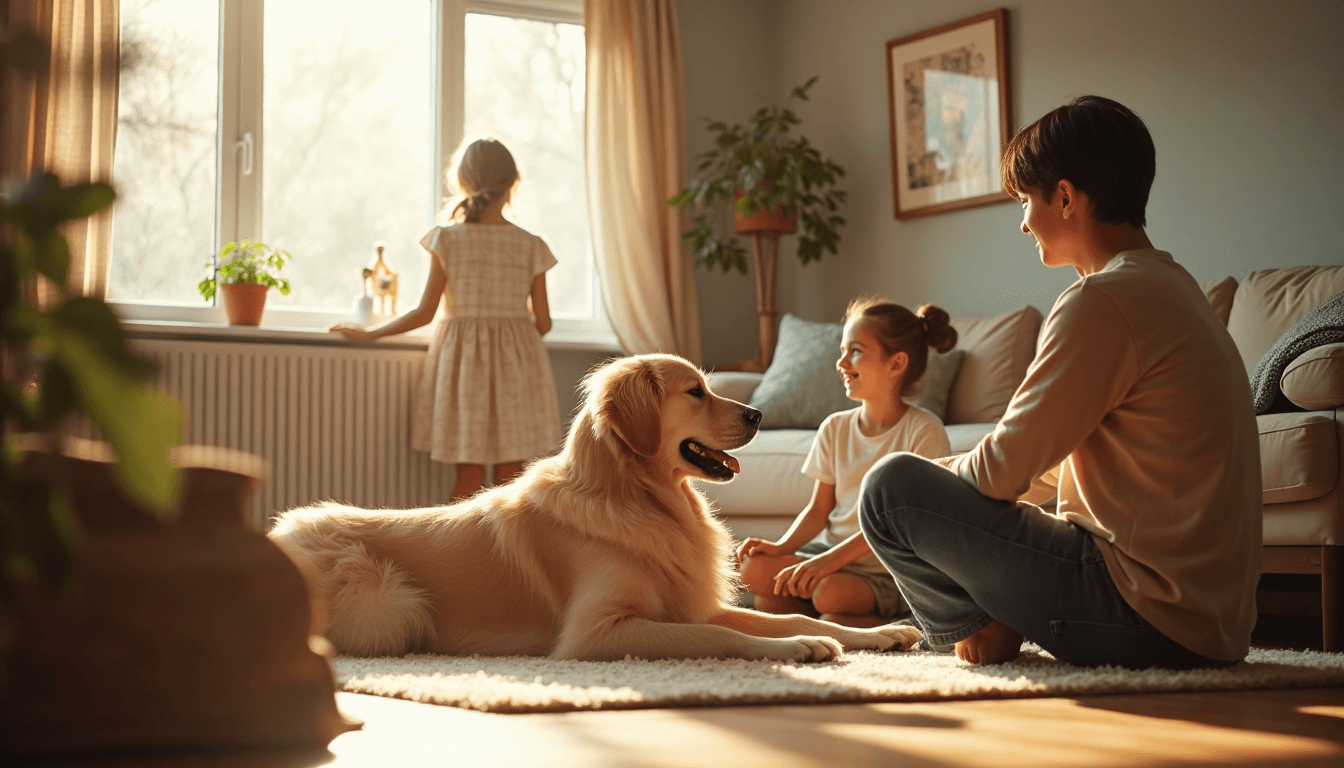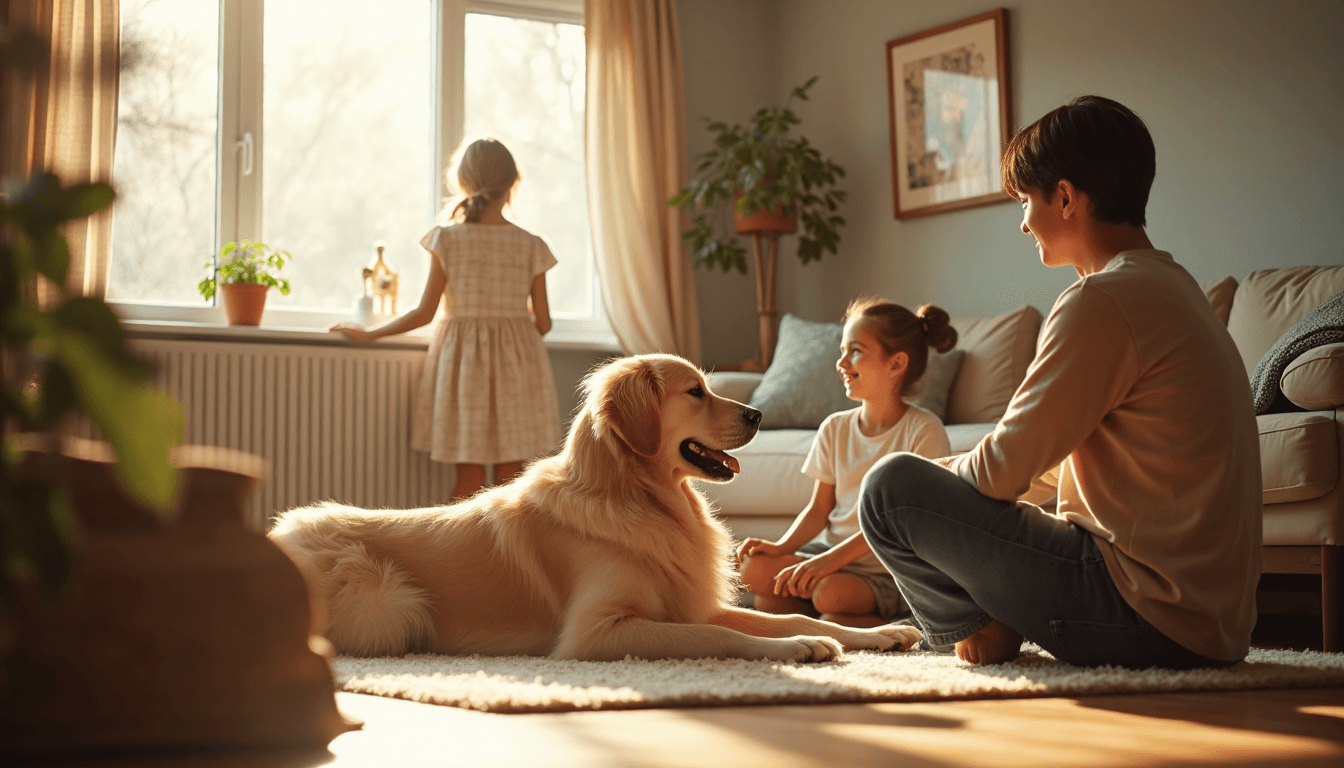
Dog safety sounds simple enough, but the truth is, it impacts far more than just your pet. Every year, nearly 4.5 million people in the US are bitten by dogs, and most of those injuries are actually preventable. Now here’s the twist. The real secret to protecting your dog and your community doesn’t start with fancy gear or strict rules. It starts with learning to understand how dogs communicate—most owners miss the warning signs completely.
Table of Contents
- Why Dog Safety Matters For Every Dog
- Risks And Dangers Dogs Commonly Face
- Practical Safety Tips For All Situations
- How Dog Safety Impacts Owners And Communities
Quick Summary
| Takeaway | Explanation |
|---|---|
| Dog Safety is Essential | Protecting your dog and the community is a critical responsibility that can prevent injuries and mitigate risks associated with dog ownership. |
| Recognize Canine Communication | Understanding your dog’s body language and stress signals is key to preventing potential conflicts or accidents. |
| Implement Practical Safety Measures | Use secure hazardous areas, proper training, and indoor and outdoor safety practices to safeguard your dog’s well-being. |
| Educate and Socialize | Regular training and socializing can significantly reduce the likelihood of dog-related incidents while fostering positive interactions with people and other dogs. |
| Community Responsibility | Responsible dog ownership contributes to community safety and well-being through adherence to regulations that can deter potential dangers. |
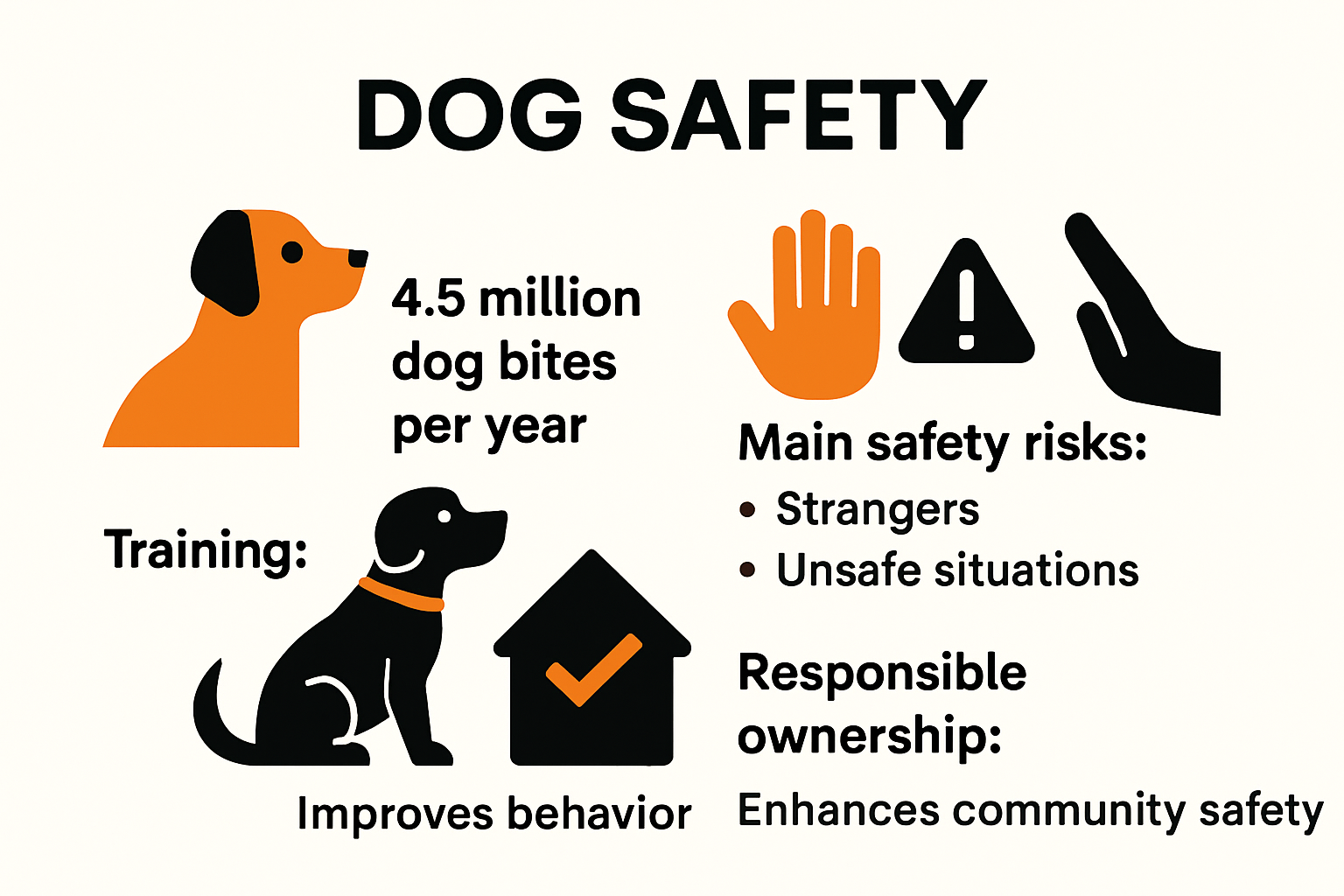
Why Dog Safety Matters for Every Dog
Dog safety is not just a recommendation it’s a critical responsibility that protects both canines and humans. Learn more about creating safe environments for your dog.
The Hidden Risks of Neglecting Dog Safety
Every year, approximately 4.5 million people experience dog bites in the United States, with children bearing the highest risk of injury. According to Cornell University’s Veterinary Research Institute, these incidents are not random occurrences but often preventable outcomes of inadequate safety practices.
Understanding potential dangers begins with recognizing that dogs communicate differently from humans. They rely on body language, territorial instincts, and learned behaviors that can trigger unexpected reactions. A seemingly friendly dog might feel threatened and respond defensively when approached incorrectly.
Prevention Through Education and Awareness
Responsible dog ownership transcends basic care. It involves comprehensive strategies that protect both the animal and surrounding community. Research from Australian Local Government Resources highlights that educational programs significantly reduce dog-related incidents.
Key prevention strategies include:
- Proper Training: Consistent behavioral training helps dogs understand boundaries and social interactions.
- Socialization: Gradual exposure to different environments and individuals reduces anxiety and aggressive responses.
- Health Monitoring: Regular veterinary checkups can identify potential behavioral or medical issues early.
Understanding Canine Communication and Safety
Dogs experience stress and anxiety differently from humans. Recognizing warning signs like ear positioning, tail movement, and body tension can prevent potential conflicts. Professional trainers emphasize that understanding your dog’s emotional state is as crucial as physical care.
For service dog handlers, seniors, and individuals with disabilities, dog safety takes on additional complexity. Communication devices like iPupPee can bridge understanding gaps, providing innovative solutions for safer human-canine interactions.
Ultimately, dog safety is a shared responsibility. By investing time in education, training, and empathetic understanding, we create environments where dogs and humans can coexist safely and harmoniously.
Risks and Dangers Dogs Commonly Face
Dogs face numerous potential hazards that can compromise their health and safety. Learn how to protect your dog in various environments.
Environmental and Health Threats
Dogs are vulnerable to a wide range of environmental and health risks that can significantly impact their well-being. According to the American Veterinary Medical Association, temperature extremes pose one of the most immediate dangers. Heatstroke is particularly critical, with short-nosed breeds like pugs and bulldogs at heightened risk. Symptoms include excessive panting, drooling, and potential collapse.
The World Health Organization highlights another significant danger: dog bites and disease transmission. In low and middle-income countries, dog bites are a primary source of rabies transmission, resulting in approximately 59,000 human deaths annually. This statistic underscores the importance of proper training, socialization, and medical care.
Disease Risks and Prevention
Canine health threats extend beyond environmental risks. The American Kennel Club identifies several critical diseases that pose substantial risks to dogs:
- Rabies: A fatal viral disease that affects the nervous system
- Distemper: A highly contagious viral illness affecting multiple body systems
- Parvovirus: A potentially deadly disease particularly dangerous to puppies
- Lyme Disease: A tick-borne illness that can cause serious long-term health complications
Prevention is key. Regular veterinary checkups, comprehensive vaccination programs, and maintaining a clean living environment can significantly reduce these risks.
To help you quickly identify the major diseases and their main effects, here’s a summary table of critical canine diseases mentioned above:
| Disease | Description | Key Risks/Effects |
|---|---|---|
| Rabies | Fatal viral disease affecting the nervous system | Death, neurological symptoms |
| Distemper | Highly contagious viral illness, multiple body systems | Respiratory, gastrointestinal issues |
| Parvovirus | Potentially deadly, especially for puppies | Severe diarrhea, dehydration, death |
| Lyme Disease | Tick-borne illness | Joint pain, fever, long-term issues |
Hidden Dangers in Everyday Environments
Even seemingly safe home environments can present unexpected threats to dogs. Household items like certain plants, human foods, and cleaning products can be toxic. Electrical cords, small objects that can be swallowed, and unsecured spaces pose additional risks.
For service dog handlers, seniors, and individuals with disabilities, these risks become even more complex. Communication and awareness are critical. Innovative solutions like iPupPee can help owners monitor and respond to their dogs’ potential health and safety challenges.
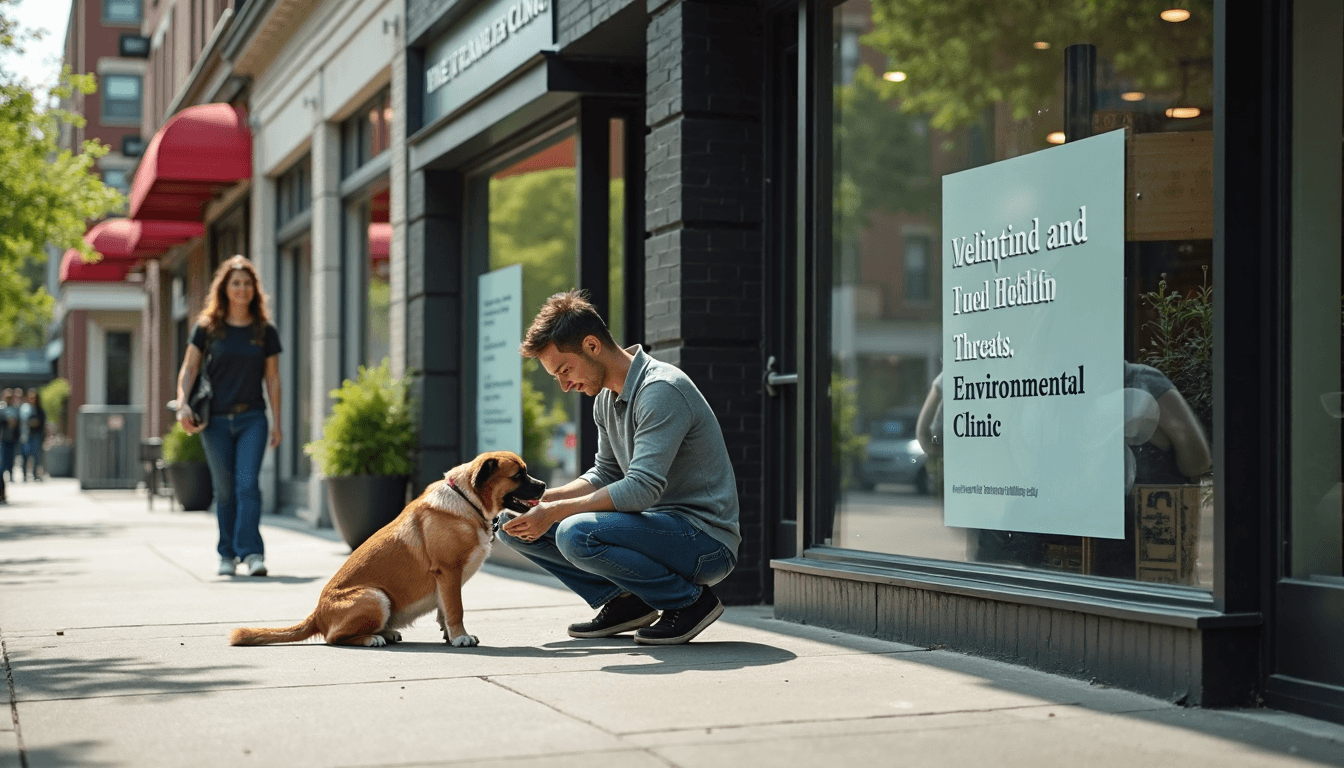
Ultimately, understanding these risks empowers dog owners to create safer, more supportive environments. Proactive care, continuous education, and attentive monitoring are the most effective strategies for protecting our canine companions from potential dangers.
Practical Safety Tips for All Situations
Ensuring dog safety requires a comprehensive approach that adapts to various environments and situations. Explore essential safety strategies for dog owners.
Home and Indoor Safety Strategies
Indoor environments present unique challenges for dog safety. According to the Centers for Disease Control and Prevention, understanding canine behavior is crucial for preventing unexpected incidents. Never approach or disturb a dog that is sleeping, eating, or caring for puppies, as these situations can trigger defensive responses.
Key indoor safety practices include:
- Secure Hazardous Areas: Keep cleaning supplies, medications, and toxic plants out of your dog’s reach.
- Create Safe Zones: Establish designated areas where your dog can rest undisturbed.
- Electrical Safety: Cover electrical cords and remove potential chewing hazards.
Below is a practical checklist table summarizing key safety practices for keeping your dog safe indoors:
| Safety Practice | Description | Completed? |
|---|---|---|
| Secure Hazardous Areas | Store cleaning supplies, meds, and toxic plants safely | ☐ |
| Create Safe Zones | Designated & quiet rest area for your dog | ☐ |
| Electrical Safety | Cover cords, remove chewing hazards | ☐ |
Outdoor and Walking Safety
Outdoor environments demand heightened awareness and preparation. VCA Hospitals recommends using a sturdy, non-retractable leash and properly fitting collar or harness during walks to maintain control and prevent accidents.
Critical outdoor safety tips include:
- Leash Control: Always maintain a firm grip and stay alert to your surroundings.
- Temperature Awareness: Avoid walking during extreme heat or cold.
- Identification: Ensure your dog wears updated identification tags and is microchipped.
Special Considerations for Vulnerable Populations
For service dog handlers, seniors, and individuals with disabilities, safety requires additional layers of preparation. The Health Service Executive emphasizes the importance of constant supervision, especially when children are involved.
Special safety considerations include:
- Communication Assistance: Utilize devices like iPupPee to enhance understanding and communication.
- Training and Socialization: Invest in professional training to address specific behavioral needs.
- Emergency Preparedness: Develop a comprehensive safety plan that accounts for potential challenges.
Ultimately, dog safety is about proactive planning, continuous education, and maintaining open communication between dogs and their human companions. By implementing these practical strategies, you can create a safer, more harmonious environment for everyone involved.
How Dog Safety Impacts Owners and Communities
Dog safety extends far beyond individual pet ownership, creating ripple effects that significantly influence community dynamics and social interactions. Discover strategies for responsible dog ownership.
Community Safety and Social Dynamics
Responsible dog ownership plays a critical role in community well-being. According to National Canine Research Council, implementing comprehensive pet ownership laws and regulations can dramatically reduce dog-related incidents. These policies typically include mandatory licensing, vaccination requirements, and leash regulations that protect both dogs and community members.
Dogs Australia highlights an unexpected benefit of responsible dog ownership: increased community safety. Dogs can enhance neighborhood security by increasing foot traffic and fostering social interactions, which naturally deter potential criminal activities.
Personal and Economic Implications
The impact of dog safety extends beyond physical protection. PubMed Central research demonstrates that proper dog training and socialization can significantly reduce potential legal and financial risks associated with dog-related incidents.
Key economic and personal considerations include:
- Legal Liability: Preventing dog bite incidents reduces potential lawsuit risks
- Healthcare Costs: Proactive safety measures can minimize medical expenses
- Insurance Implications: Well-trained dogs often qualify for lower insurance premiums
Supporting Vulnerable Populations
For service dog handlers, seniors, and individuals with disabilities, dog safety becomes even more critical. Innovative communication tools like iPupPee can bridge understanding gaps, providing additional layers of safety and independence.
Special considerations for vulnerable populations include:
- Enhanced Communication: Devices that facilitate better human-dog interaction
- Training Support: Specialized programs addressing unique safety needs
- Community Resources: Support networks for specialized dog handling
Ultimately, dog safety is a collective responsibility. By prioritizing education, training, and proactive management, dog owners contribute to creating safer, more connected communities. Each responsible action creates a positive impact that extends far beyond individual households, promoting a culture of mutual respect and understanding between dogs and humans.
Frequently Asked Questions
What are the most common risks associated with dog safety?
Dog safety risks include dog bites, environmental dangers like extreme temperatures, disease transmission, and household hazards. Understanding these risks is crucial for preventing injuries.
How can I recognize my dog’s communication signals?
Dogs communicate through body language and behavior. Key signals include ear position, tail movement, and body tension. Learning to read these signs can help prevent potential conflicts or accidents.
What are some practical safety tips for indoor environments?
To ensure indoor safety, secure hazardous areas by storing cleaning supplies out of reach, create designated safe zones for your dog to rest, and cover electrical cords to prevent chewing.
Why is responsible dog ownership important for community safety?
Responsible dog ownership enhances community safety by reducing dog-related incidents through adherence to regulations. Well-trained dogs foster positive interactions and contribute to a secure neighborhood environment.
Empower Your Dog’s Safety and Communication—Feel Secure Every Day
Are you worried about missing the warning signs your dog tries to show you? The article highlighted just how often miscommunication leads to preventable accidents or even emergencies. Whether you live alone, care for a service dog, or want to protect a new puppy, the need for clear communication and instant safety is urgent—and deeply personal.
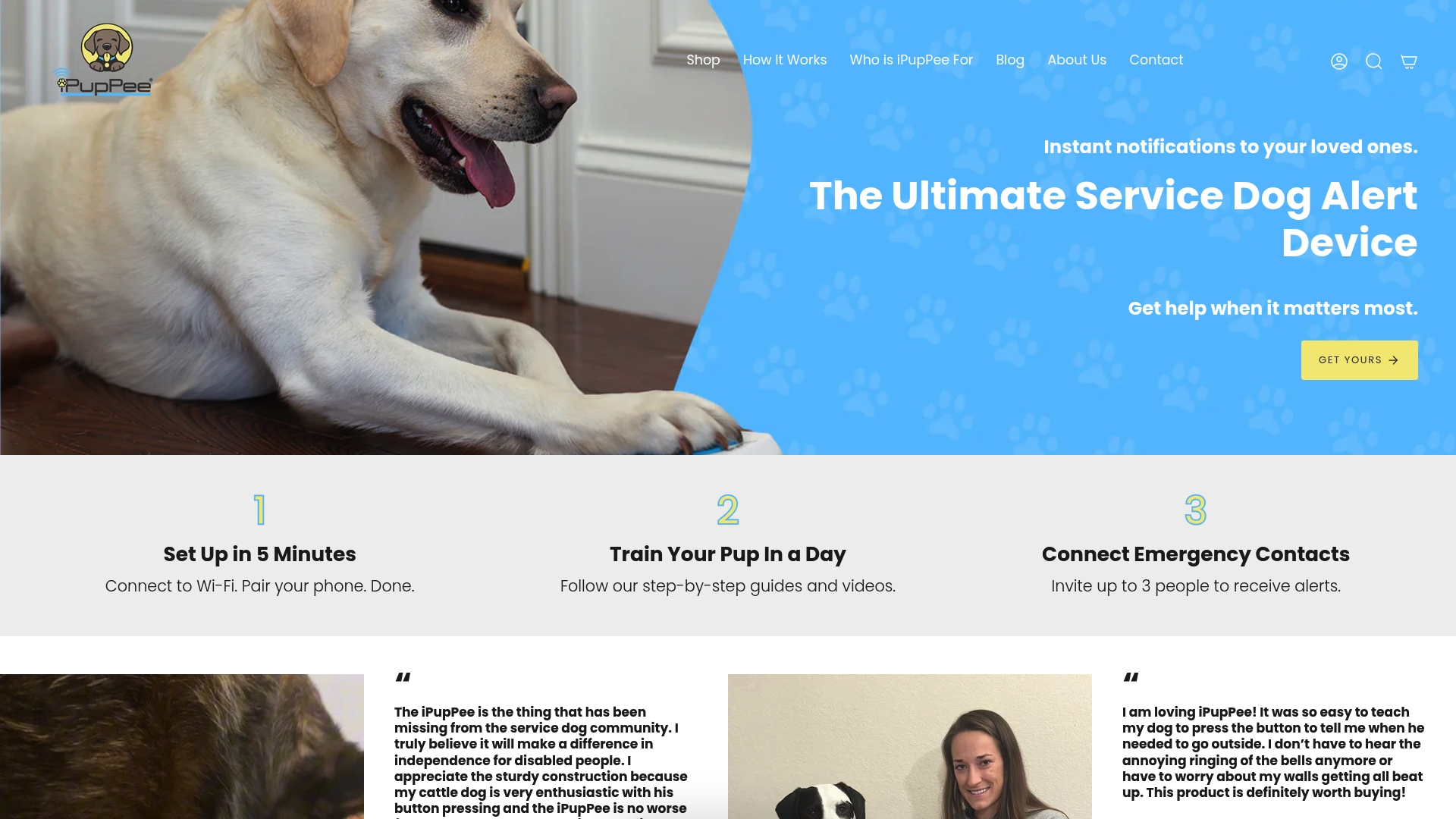
Imagine a solution that lets your dog call for your help with one simple press. The iPupPee device transforms the way you and your dog connect, providing peace of mind and fast response when it matters most. Explore how this device provides real independence for those who need it most—from seniors to new pet owners—by visiting our website and learning more in our blog on effective dog safety. Do not wait for an emergency to realize what clear communication can do for your peace of mind. Check out iPupPee solutions now and bring safer companionship home today.

